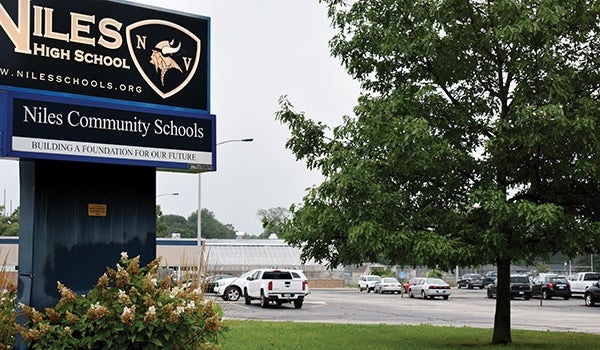Brandywine to seek sinking fund millage in May election
Published 9:17 am Wednesday, January 27, 2016
Voters will be asked this spring to consider passing a new millage to help the Brandywine Community Schools district pay for major renovations and repairs such as roof repairs, window replacement and parking lot maintenance.
On Monday, the school board approved placing the 1 mill proposal — known as a Building and Site Sinking fund millage — on the ballot during the May 3 special election.
Finance Director Kathy Holy said it would cost the average homeowner with a home worth $100,000 approximately $50 a year, or less than $1 a week.
It would generate approximately $269,000 a year for the district for a period of 10 years.
Supt. John Jarpe said many nearby school districts, including Niles, Buchanan and Berrien Springs, already have sinking funds. Brandywine does not, he said, and has never had one.
Sinking fund money, he said, could only be used for infrastructure projects and non-routine maintenance, such as replacing boiler systems and doing roof repairs.
“It can’t be used for things like salaries or transportation,” he said.
Brandywine currently uses general fund money to pay for building and site maintenance and projects.
For instance, Holy said the district is in the middle of a $570,000 roof repair project.
She said the district expects to do additional roof projects totaling $1.8 million during the 2018-19 school year.
Other future needs, she said, include replacing windows and the heating system at the Brandywine Innovation Academy building and replacing the boilers at the high school in the next three to five years.
While Jarpe said the district has a healthy fund balance of around $3.3 million (or about 25 percent of the district’s annual budget), having a sinking fund would go a long way toward ensuring it stays that way.
“We do have a healthy one, but that could be threatened by big projects such as roofs,” he said.
Holy said an advantage of a sinking fund, when compared to a bond, is that the sinking fund does not come with interest payments or associated borrowing costs.
Jarpe also said the district is in the process of reselling its bonds, which could translate to significant savings for taxpayers.
It is not yet known, he said, if the savings would be enough to offset the addition of the proposed 1 mill sinking fund.
Jarpe said they hope to know by sometime in early February.






